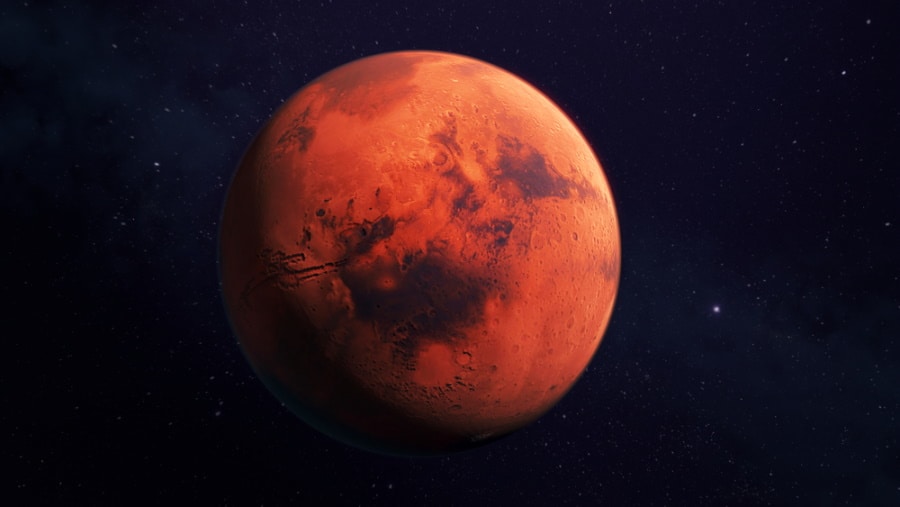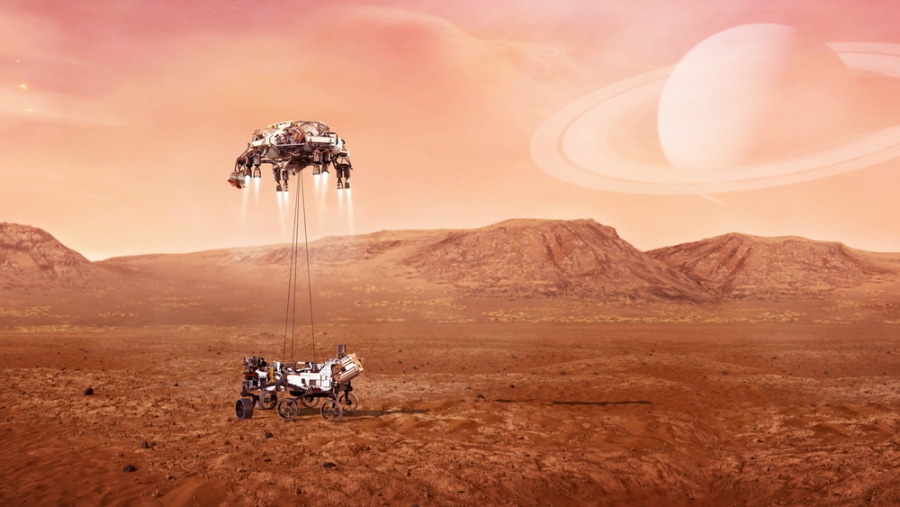What is the Temperature on Mars? The Surprising Answer!
Last Updated on

Out of all the planets in the solar system, Mars is the most like Earth when it comes to its composition, weather, and geological activity. Like our home planet, Mars experiences seasons due to its axial tilt, which is about 25 degrees. This is comparable to Earth’s axial tilt, which is 23.5 degrees. Throughout the Martian seasons, the temperature can range from extreme lows of -166 °F to as high as 95 °F1, which is as hot as some exceptional summer days on Earth. The average temperature, however, is about -81 °F2 across both hemispheres. Continue reading to learn more about Mars and what affects the temperature of it.

Seasons on Mars
The Red Planet experiences diverse seasons much like the Earth, however, because Mars is further from the Sun, its seasons are significantly longer. Mars also has a comparatively eccentric orbit, meaning it’s elongated and oval. As a result, the seasons in the Southern Hemisphere tend to be more extreme than the milder seasons in the North. During the Martian summer, this discrepancy can contribute to temperatures that are warmer by up to 54 °F in the south.
During the wintertime, polar caps of water ice and carbon dioxide grow, which occasionally leads to the production of “Martian snow.” Evidence of climatic cycles on Mars includes the presence of water ice layered with Martian dust, which is due to the progression of the seasons. Furthermore, the geological features in the southern hemisphere, such as canyons, valleys, canals, mountains, and volcanoes, are evidence of long-gone glaciers which may have existed when Mars was still young.

Another seasonal phenomenon that affects the temperatures on Mars is the planet’s characteristic dust storms, which can reach speeds of up to 100 mph. These storms can be small and concentrated to a minor area or engulf the entire planet in a wash of crimson particles. From our observations, these storms tend to occur when Mars is at its closest point to the Sun. Moreover, the presence of dust storms has been seen to increase the global temperature significantly.
The Martian Atmosphere
Mars has an extremely thin atmosphere that is about 100 times frailer than Earth’s. The presence of an atmosphere acts kind of like a “blanket,” allowing planets to retain their heat energy. However, since Mars’ atmosphere is so thin, it can’t retain much of its heat. This contributes to the frigid temperatures on the planet and subjects Mars to a bombardment of cosmic radiation. Mars is also about 1.52 times as far from the Sun as Earth, meaning it receives only about 43% of the sunlight we are accustomed to. As a result, it is difficult to regulate the temperature on Mars, leading to its dynamic and highly variable seasons.


Conclusion
Even though Mars is so far away, it is comforting to know that it experiences similar weather and seasons to our home planet. With temperatures ranging from -166 °F to as high as 95 °F, you’d have to suffer the inconvenience of packing both winter and summer clothes to get through a typical Martian day. With a thin atmosphere, far distance from the Sun, and planet-consuming dust storms, it is clear why Mars has such variable weather conditions.
Featured Image Credit: joshimerbin, Shutterstock
Table of Contents
About the Author Robert Sparks
Robert’s obsession with all things optical started early in life, when his optician father would bring home prototypes for Robert to play with. Nowadays, Robert is dedicated to helping others find the right optics for their needs. His hobbies include astronomy, astrophysics, and model building. Originally from Newark, NJ, he resides in Santa Fe, New Mexico, where the nighttime skies are filled with glittering stars.
Related Articles:
What Is the Best Binocular Magnification for Hunting? Optical Features Explained
15 Crucial Facts About Ultraviolet Rays & the Sun
What Constellation Is Spica In? The Interesting Answer!
10 Interesting Leo Constellation Facts, Myths, and FAQs
15 Interesting Pegasus Constellation Facts, Myths, and FAQs
6 Interesting Sagittarius Constellation Facts, Myths, and FAQs in 2024!
What Are Constellations? Where Did They Come From?
8 Interesting Libra Constellation Facts, Myths, and FAQs
